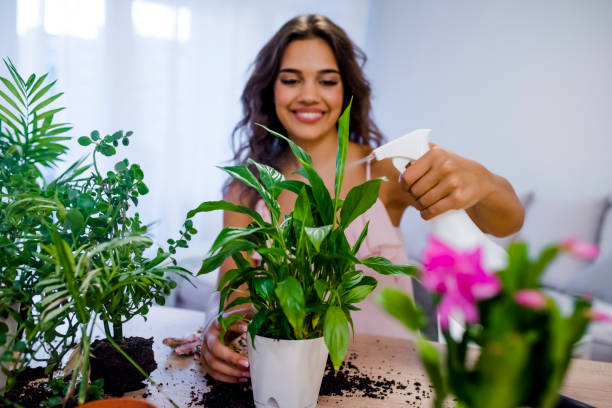Taylor says that many of the Truelove seed varieties are ones that gardeners and farmers have collected through family lines and seed exchanges. He says that “most of our growers search on their own for their favorite varieties and want to find a market for some of their homegrown crops.” The catalog includes seeds from Syria, the African diaspora, and Philadelphia.
Taylor founded Truelove Seeds after managing a private collection of heirloom seeds with more than 4,000 varieties. Taylor and Chris Bolden Newsome co-founded the company to work with farmers involved in the food sovereignty movement. They wanted to preserve and make culturally significant seeds available while also providing farmers with mentorship, an outlet for seeds and an income source.
Truelove Seeds has a profit sharing model, so that gardeners and farmers get 50% of each packet sold. Taylor and Bolden Newsome host a radio program called ” seeds and their people” which explores the stories of seeds in communities.
Each seedkeeper has their own unique story to tell and a connection with the seeds. Their efforts can create an emotional connection to the seeds, connect communities with ancestral crops, and preserve biodiversity for future generations.
Read more: Indigenous song keepers reveal traditional ecological knowledge in music
Seed keeping and creating a familiar space
Naw Ta Blu Moo, an interpreter from the Karen Refugee Community, an Indigenous group from Myanmar, spoke at Novick Urban Farm, Philadelphia.
Karens grow crops like chilis, cucumbers, bitter melons, bitter gourds and chin ywet . The seeds are sourced through an informal network in Myanmar of seedkeepers who either bring the seeds to North America or preserve and share the seeds within the Karen communities. Blu Moo says that farmers are motivated to plant more seeds because they believe it will help heal their communities.
Karen farmers grow crops like chilis, cucumbers, bitter melon and sour leaves known as chin Baung ywet, using seeds from an informal seed network. (Shutterstock)
Shwe Chit has worked at Novick Urban Farm for five years. Karen gardeners are able to farm plots on the farm. The first year was difficult, but he says that the rewards of growing crops are worth the effort. In the summer, he sells crops like winter gourd, hot pepper and other vegetables at the Novick Urban Farmstand.
Blu Moo says that for Karen gardeners, it can be hard to find the exact seeds they need for their community. Sometimes, community members believed they had the right seeds but were mistaken. For example, when the chili fruit grew, it wasn’t a Myanmar chili. It was a Spanish one.
Terese has been working with Karen gardeners for more than a decade. She is also the co-editor for the forthcoming book Moving Gardens, Itineraries, and Sanctuaries.
She believes that cultivating plants at home creates a familiar space in a foreign and alienating environment. This includes accessing a variety of flavors and engaging in physical gardening work. It also involves shaping the landscape so that it looks like home.
Seed keeping and cooperation
Seeds can be stored for future generations in the Arctic town of Svalbard. This initiative is critical to food safety and seed storage.
The Svalbard Global Seed Vault, located in a mountainous area, is a seed-storage facility that contains copies of seeds collected from all over the world. This prevents both incremental and catastrophic losses of crop diversity. The Crop Trust reports that there are over a million seed samples from almost every country of the world in the vault.
Nations can deposit their genesbanks in order to protect them from natural disasters or human conflict. Asmund Asdal is the co-ordinator of Svalbard Global Seed Vault. He says that even though nations are not best friends, their cooperation in protecting and preserving seeds is important.
Today, seeds from Russia and Ukraine are on the same shelf. The shelves are stocked with seeds from both North Korea and South Korea. Even though the countries are hostile, they work together to protect sources. The North Korean roots come in seven wooden boxes, made in North Korea. They contain seeds for cabbages, beans, barley, and buckwheat.
The Svalbard Global Seed Vault, located on the Norwegian Island of Spitsbergen and in the remote Arctic, is a safe seed bank. (Shutterstock)
Reuniting community and seeds
Tiffany Traverse, of Peace River in B.C. is planting seeds of Qwlewe or nodding onions, as well as other Indigenous crops. She claims that nodding onions are often destroyed by urban sprawl and tourists who try to reach the river. She carefully transplants the Qwlewe in safer places to ensure they can thrive once more.
Traverse, who is originally from Secwepemculecw Territory, was mentored Mohawk Seedkeeper Rowen white, one of the leaders in the seedkeeping movement.
She established Fourth Sister Farm where she provides access to healthy, culturally-relevant seeds and food, using traditional growing techniques such as Moon-phase Planting.
Traverse says, “I’m stewarding these seeds so they can be returned to the nations, people or communities to which they are connected.” She is referring to beans, tomatoes, and squash which she grows, and then returns to the respective communities. This can include teaching, sharing, and growing recipes, as well as seed saving.
The process is also known as rematriation. Traverse says that “rematriation” is the process of returning seeds to the peoples and communities where they originated. She believes this asks: “How can we help each other?” How can we help each other grow and spread these seeds back into our communities?
Gagnon explains that much of his work involves creating spaces of refuge in a precarious time. Gagnon says that seeds are light and designed to travel long distances. “Seeds create continuity and a sense cohesion in life even if you are constantly on the go or between.”



